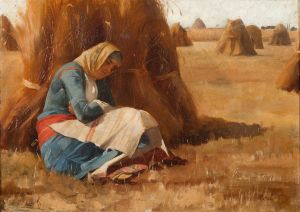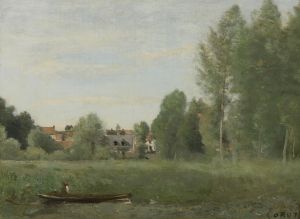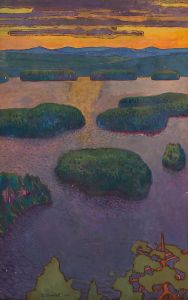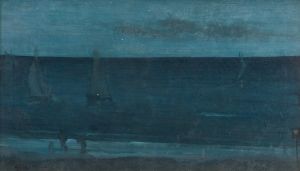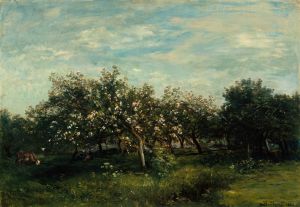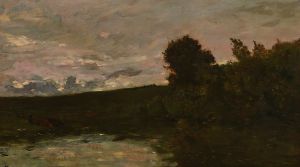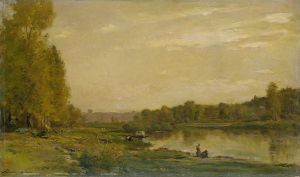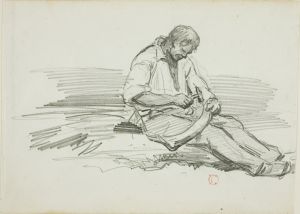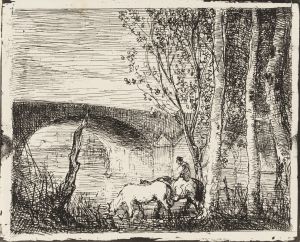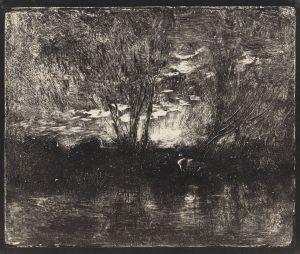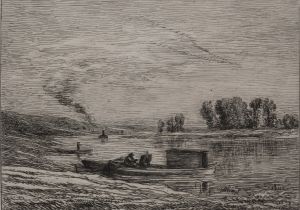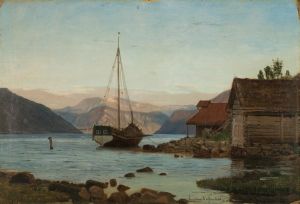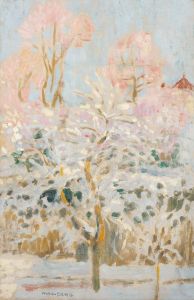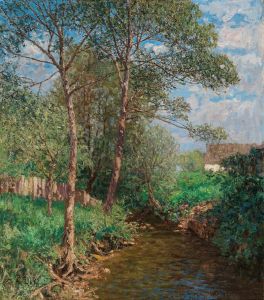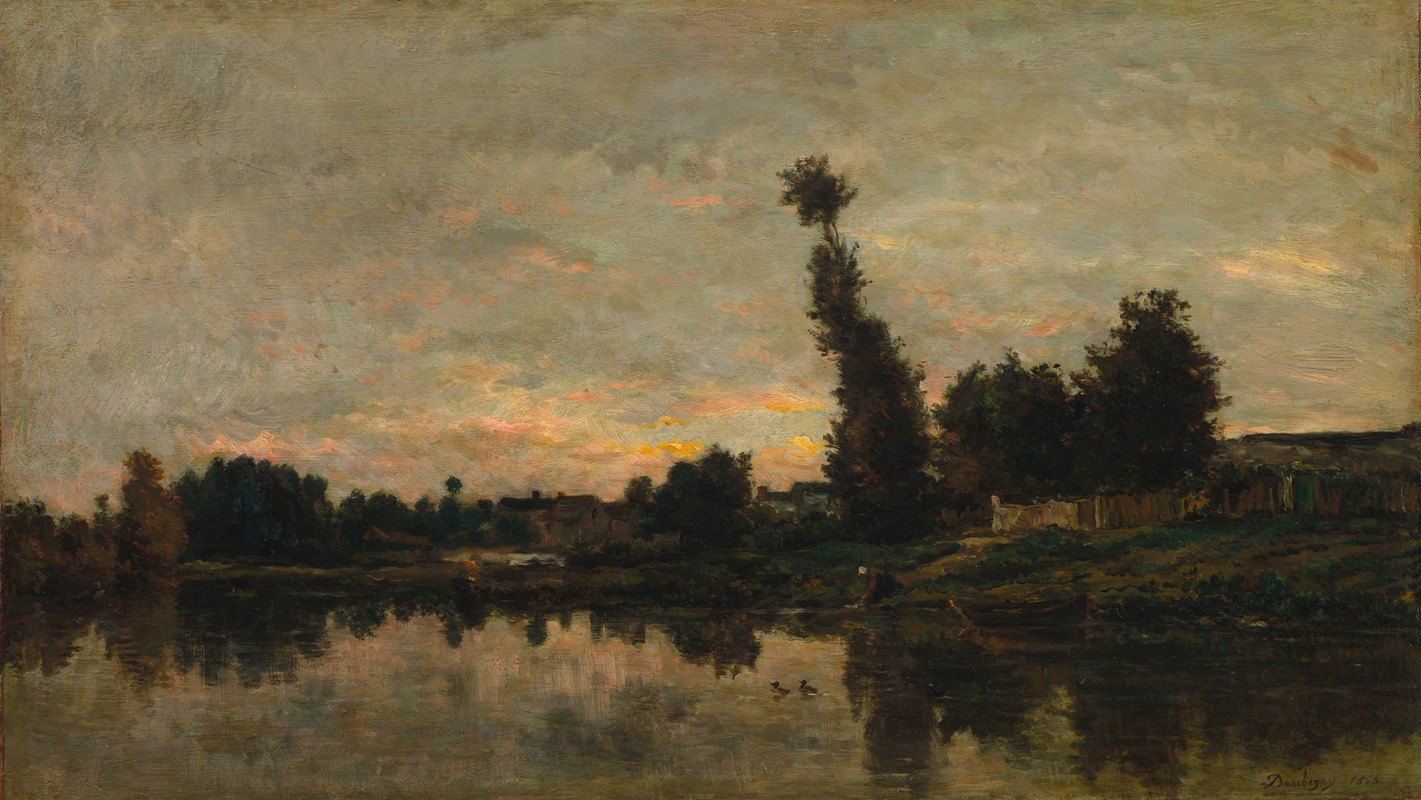
Sunset on the River Oise
A hand-painted replica of Charles François Daubigny’s masterpiece Sunset on the River Oise, meticulously crafted by professional artists to capture the true essence of the original. Each piece is created with museum-quality canvas and rare mineral pigments, carefully painted by experienced artists with delicate brushstrokes and rich, layered colors to perfectly recreate the texture of the original artwork. Unlike machine-printed reproductions, this hand-painted version brings the painting to life, infused with the artist’s emotions and skill in every stroke. Whether for personal collection or home decoration, it instantly elevates the artistic atmosphere of any space.
Charles François Daubigny’s Sunset on the River Oise is a notable example of 19th-century French landscape painting. Created in 1865, this oil-on-canvas work reflects Daubigny’s deep connection to nature and his innovative approach to plein air painting, which significantly influenced the Barbizon School and later the Impressionist movement. The painting captures a tranquil scene along the River Oise, a waterway in northern France that Daubigny frequently depicted in his works.
The composition of Sunset on the River Oise is characterized by its harmonious balance between land, water, and sky. The warm hues of the sunset dominate the upper portion of the canvas, blending seamlessly into the soft blues and greens of the river and surrounding landscape. Daubigny’s loose, fluid brushstrokes convey a sense of immediacy and naturalism, emphasizing the fleeting effects of light and atmosphere. This technique was groundbreaking at the time and marked a departure from the more rigid, detailed style of academic landscape painting.
Daubigny often painted aboard his studio-boat, which he called Le Botin. This allowed him to explore and capture the changing moods of rivers and their surroundings directly from the water. His innovative approach to working outdoors, combined with his focus on natural light and color, earned him recognition as a precursor to Impressionism. Artists such as Claude Monet and Camille Pissarro were influenced by Daubigny’s methods and aesthetic sensibilities.
The River Oise held personal and artistic significance for Daubigny. He settled in Auvers-sur-Oise, a village along the river, in 1860. This region became a source of inspiration for many of his works, including Sunset on the River Oise. The painting reflects Daubigny’s ability to capture the serene beauty of the French countryside, as well as his skill in portraying the subtle interplay of light and shadow during transitional times of day.
Today, Sunset on the River Oise is regarded as an important work within Daubigny’s oeuvre. It exemplifies his mastery of landscape painting and his role in bridging the Barbizon School and Impressionism. The painting is housed in the collection of the National Gallery of Art in Washington, D.C., where it continues to be appreciated for its artistic and historical significance.





